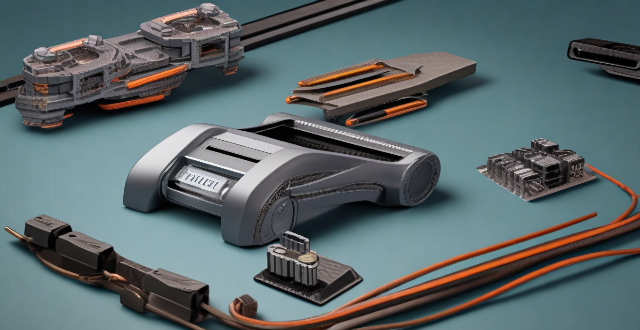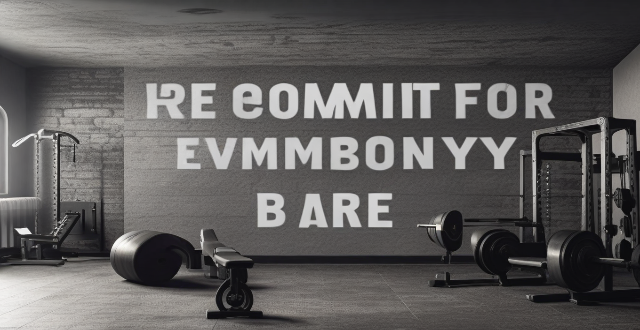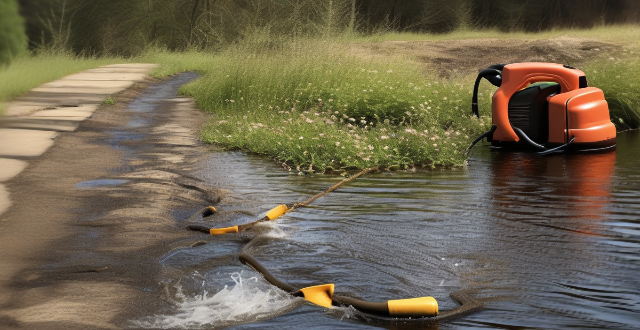Training Equipment

What kind of equipment do I need to start a home strength training program ?
Starting a home strength training program is an excellent way to improve your physical fitness and overall health. However, before you begin, it's essential to have the right equipment to ensure safety and effectiveness. In this article, we will discuss the various types of equipment needed for a successful home strength training program. Resistance bands are versatile and affordable tools that can be used for a wide range of exercises. They come in different strengths, from light to heavy, making them suitable for beginners and advanced trainers alike. Dumbbells are another essential piece of equipment for a home strength training program. They allow you to target specific muscle groups and perform compound movements that engage multiple muscle groups simultaneously. Kettlebells are similar to dumbbells but offer a unique shape and design that allows for more dynamic movements. A suspension trainer, such as TRX straps or rings, is an excellent tool for adding resistance to bodyweight exercises. A stability ball is a large, inflatable ball that can be used for various exercises targeting core strength, balance, and flexibility. Lastly, a medicine ball is a weighted ball that can be used for various exercises targeting power, strength, and coordination. In conclusion, having the right equipment is crucial for starting a successful home strength training program. By investing in resistance bands, dumbbells, kettlebells, a suspension trainer, stability ball, and medicine ball, you'll have everything you need to build strength, improve flexibility and balance, and achieve your fitness goals.

How have advancements in technology impacted sports equipment ?
Advancements in technology have significantly impacted sports equipment, revolutionizing materials, performance tracking, safety features, training methods, and customization options. Key areas of influence include: 1. **Material Innovations**: Introduction of lightweight and durable materials like carbon fiber and advanced plastics, as well as smart fabrics for performance wear and thermoregulation. 2. **Performance Tracking**: Development of wearable technology such as fitness trackers and GPS devices, along with biomechanical analysis tools like motion capture systems and sensor technology. 3. **Safety Enhancements**: Incorporation of impact sensors and smart concussion management in helmets, synthetic turf for fields, and energy-efficient LED lighting for courts. 4. **Training Aids**: Integration of Virtual Reality (VR) and Augmented Reality (AR) for simulation training and skill development, as well as data analytics for video analysis and biometric feedback. 5. **Equipment Customization**: Application of 3D printing for custom orthotics and jaw guards, and personalization of sports gear like batting gloves and cycling kits. These technological advancements continue to enhance athletic performance, safety, and enjoyment across various sports disciplines.

What sports equipment do I need for a complete home gym setup ?
Setting up a home gym requires careful consideration of various types of sports equipment to ensure a comprehensive workout routine. Here's a summary of the key components: 1. **Cardiovascular Equipment**: Includes treadmills, ellipticals, stationary bikes, and rowing machines for endurance and cardio training. 2. **Strength Training Equipment**: Dumbbells, weight plates, barbells, kettlebells, and resistance bands are essential for building muscle mass and overall strength. 3. **Bodyweight Training**: Pull-up bars, parallette bars, and wall-mounted rings facilitate calisthenics exercises using one's body weight as resistance. 4. **Stretching and Recovery**: Foam rollers and yoga mats aid in muscle recovery, flexibility improvement, and floor exercises. 5. **Additional Items**: An exercise bench, jump rope, and a timer or app can complement your workouts with versatility and intensity tracking. Space availability and budget should guide your choices, allowing you to start with basics and expand gradually. With the right selection of equipment, you can create a well-rounded home gym that supports all aspects of fitness and wellness.

What are the latest trends in sports equipment technology ?
The latest trends in sports equipment technology include wearable devices, virtual reality training, augmented reality coaching, smart gym equipment, and biometric sensors. These innovations aim to improve athlete performance by providing personalized feedback and optimizing workouts.

How might AI impact the development of new sports equipment and gear ?
AI is revolutionizing the sports equipment industry by optimizing performance, enhancing safety, and enabling customization. It analyzes data to improve club design, predict ball trajectories, and monitor athlete safety with smart sensors. AI also personalizes equipment like running shoes based on gait analysis and adapts to individual needs during use. Additionally, it aids training and coaching through shooting analyzers and virtual coaches. Wearable technology with AI tracks body metrics and optimizes training. As AI advances, further innovations in sports equipment are anticipated.

How can I prevent electrical shocks in the workplace ?
To prevent electrical shocks in the workplace, it's crucial to understand risks, use proper equipment, follow safe work practices, provide training, maintain cleanliness, report faulty equipment, and stay informed. Specific actions include identifying hazards, using insulated tools, implementing lockout/tagout procedures, conducting regular inspections, ensuring employee training, and promptly repairing or replacing damaged equipment.

What are the best sports equipment for beginners ?
The article provides a list of seven essential pieces of sports equipment for beginners, including yoga mats, dumbbells, resistance bands, jump ropes, foam rollers, kettlebells, and swim goggles. Each piece of equipment is described in terms of its benefits, uses, and recommendations for beginners. The article emphasizes the importance of having the right equipment for success in any sport and encourages beginners to prioritize safety and proper form when using new equipment.

How has artificial intelligence contributed to the innovation of sports equipment ?
Artificial intelligence has significantly contributed to the innovation of sports equipment by improving its design, functionality, and performance. AI algorithms optimize sports equipment designs based on athlete data and feedback, generate personalized training programs, track performance through sensors and wearable devices, and develop advanced coaching tools. These advancements have transformed the way athletes train, compete, and perform, with more exciting developments expected in the future.

Can you recommend any budget-friendly gym equipment ?
The text offers recommendations for budget-friendly gym equipment, including multi-functional fitness equipment like adjustable dumbbells, resistance bands, and a jump rope; bodyweight training essentials such as a pull-up bar, push-up stands, and an ab wheel; and additional accessories like a gym mat, foam roller, and kettlebell. These affordable items can help achieve fitness goals without the need for expensive gear or a gym membership.

What are some examples of smart sports equipment ?
Smart sports equipment is revolutionizing physical activities by integrating technology to provide enhanced performance tracking, feedback, and engagement. Examples include wearable technology like fitness trackers and smart clothing, smart gym equipment such as connected weights and machines, interactive flooring, virtual reality and augmented reality apps, and smart balls and other sports gear. These devices are making it easier for athletes and enthusiasts to monitor their progress, optimize their training, and enjoy new levels of engagement in their chosen activities.

What are the latest innovations in sports equipment ?
The latest sports equipment innovations include smart wearable devices, improved materials and designs, virtual and augmented reality technologies, and connected gym equipment. These advancements aim to enhance performance, safety, and convenience for athletes at all levels.

What are some strategies for maintaining and upgrading equipment in a sports facility ?
To maintain and upgrade equipment in a sports facility, it is important to conduct regular maintenance checks, provide training and education to staff and users, allocate sufficient funds for maintenance and upgrades, integrate technology into the facility, and establish partnerships and networks with industry experts. These strategies help ensure the safety of athletes, enhance their performance, and provide a pleasant experience for users.

How do safety regulations influence the use of protective equipment in the workplace ?
Safety regulations play a crucial role in ensuring that workers use protective equipment in the workplace. They enforce compliance by requiring employers to provide necessary protective equipment to their employees, mandate regular training sessions for workers about the importance of using protective equipment, conduct safety inspections periodically to ensure that protective equipment is up-to-date, functional, and used correctly, and drive continuous improvement based on new technologies, changing work environments, and lessons learned from incidents. These measures collectively create a safer work environment for all employees.

How has wearable technology influenced the development of sports equipment ?
Wearable technology has revolutionized sports by providing athletes with innovative tools to enhance their performance and monitor their health. This includes improved performance tracking through real-time data collection and advanced analytics, enhanced safety and injury prevention through impact monitoring and recovery monitoring, personalization and customization of training programs and equipment, connectivity and social interaction through virtual training partners and social media integration. These advancements have led to better overall performance, faster improvement rates, increased safety, and a sense of community among athletes.

How can I find the best deals on sports equipment online ?
Finding the best deals on sports equipment online requires research, patience, and using various strategies. These include comparing prices across different retailers, looking for discount codes and promotions, shopping during sales and holidays, considering buying used or refurbished equipment, and joining loyalty and rewards programs. By following these tips, you can save money while getting high-quality gear for your favorite sports activities.

How have advancements in materials science impacted sports equipment design ?
Advancements in materials science have significantly impacted sports equipment design, improving durability, performance, safety, comfort, and customization. Examples include carbon fiber bats, advanced composite tennis racquets, titanium golf clubs, aerodynamic cycling helmets, shock-absorbing running shoes, breathable athletic apparel, customized orthotics, and personalized mouthguards. These innovations not only enhance the athletes' performance but also reduce waste, making it an environmentally friendly option.

How do I know if a tennis training camp offers quality coaching ?
When considering enrollment in a tennis training camp, it is crucial to assess the quality of coaching by examining credentials and experience of coaches, coach-to-player ratios, training methods and philosophy, reputation and reviews, facilities and support services, and personalized attention and feedback.

What are some must-have sports equipment for runners ?
Running is a popular form of exercise that requires minimal equipment. However, having the right gear can make your running experience more comfortable, enjoyable, and safer. Here are some must-have sports equipment for runners: 1. **Running Shoes** - A good pair of running shoes will provide support, cushioning, and stability to your feet and ankles during your run. Look for shoes that fit well and are designed specifically for running. 2. **Socks** - Socks made from moisture-wicking materials like polyester or nylon can help keep your feet comfortable and blister-free during long runs. 3. **Running Clothes** - Choose clothing made from synthetic materials like polyester or nylon, which draw sweat away from your body and dry quickly. 4. **GPS Watch or Fitness Tracker** - A GPS watch or fitness tracker can help you keep track of your pace, distance, and other metrics while running. 5. **Hydration System** - A hydration system like a hydration belt, handheld water bottle, or hydration pack can help you stay hydrated during long runs in hot weather. 6. **Reflective Gear** - Wearing reflective gear is essential for staying visible to drivers and other pedestrians when running at night or in low-light conditions. 7. **Sun Protection** - Protect yourself from the sun's harmful UV rays by wearing a hat with a brim and applying sunscreen to exposed skin before heading out. 8. **Fuel and Nutrition** - For longer runs, carrying fuel and nutrition like energy gels, chews, or bars can help maintain your energy levels and prevent muscle cramps. Invest in quality equipment that suits your needs and preferences, and don't forget to replace worn-out items regularly to maintain their effectiveness and safety.

Is there a difference between consumer-grade and professional-grade sports monitoring equipment ?
This article explores the differences between consumer-grade and professional-grade sports monitoring equipment, focusing on accuracy, features, durability, and price. It provides examples of both types of devices, highlighting their key characteristics and target audiences.

What kind of equipment do sports rehabilitation centers use in their treatments ?
Sports rehabilitation centers employ a range of equipment to aid athletes in injury recovery and performance enhancement, including therapeutic modalities like hot/cold packs, ultrasound, electrical stimulation, and laser therapy. Manual therapy tools such as foam rollers, massage tables, spinal traction tables, resistance bands, and weights are used. Rehabilitation machines include treadmills, exercise bikes, ellipticals, and rowing machines. Assessment tools encompass gait analysis systems, force plates, range of motion devices, and strength testing equipment. The variety of equipment is chosen based on the individual needs of the injured athlete, the type of injury, and the phase of recovery.

What equipment do I need to bring to a tennis training camp ?
Attending a tennis training camp requires essential tennis gear, protective accessories, and personal items. Pack primary and spare racquets, practice and new balls, athletic clothing, tennis shoes, sun protection, and water bottles. Consider ankle braces, knee supports, and elbow bands for injury prevention. Don't forget casual clothes, toiletries, a backpack, reading material, and devices with chargers for off-court activities. Check with the camp organizers for specific requirements to ensure a complete packing list.

What are the legal requirements for health and safety training on a construction site ?
Legal Requirements for Health and Safety Training on a Construction Site: - Regulatory Bodies: OSHA, EPA, DOL - Types of Training: HAZWOPER, Confined Space Entry, Fall Protection, Electrical Safety, Scaffold Safety - Frequency of Training: Annual refresher courses, on-site training sessions before starting work, regular toolbox talks during work hours - Best Practices: Implementing a safety culture, providing adequate equipment and facilities, conducting regular safety meetings.

Can virtual reality be used to improve sports training ?
Virtual reality (VR) technology has the potential to revolutionize sports training by providing athletes with immersive and interactive experiences that can enhance their skills and performance. VR can create realistic simulations of game environments, provide instant feedback on an athlete's performance, reduce the risk of injury, make training more engaging and enjoyable, allow athletes to train anywhere, customize training programs, and save money on travel expenses and equipment costs. Examples of VR in sports training include basketball, golf, football, and boxing. As VR technology continues to advance, it will likely become an increasingly popular tool for sports training across a wide range of disciplines.

How do high-tech training facilities contribute to athlete development and recovery ?
High-tech training facilities contribute to athlete development and recovery by providing advanced equipment, technologies, and personalized programs. These resources help improve performance, prevent injuries, and facilitate efficient recovery.

How do I properly use and maintain electrical equipment ?
Electrical equipment requires proper use and maintenance to ensure safety, efficiency, and longevity. Key tips include reading the manual, inspecting before use, avoiding overloading, keeping away from water, cleaning regularly, checking wiring, replacing parts as needed, storing properly, unplugging when not in use, using surge protectors, and avoiding DIY repairs for significant issues. Following these guidelines helps extend the lifespan of electrical equipment and minimizes risks associated with their use.

To what extent do technological advancements (like improved equipment and analytics) influence sports performance at the highest level ?
Technology has significantly impacted sports performance through improved equipment, advanced analytics, and enhanced training methods. Lightweight materials, aerodynamic designs, and customized gear have boosted athlete performance. Safety measures and recovery tools have minimized injuries and accelerated healing. Smart devices and simulation tools aid efficient training. Advanced analytics aid in performance tracking, strategy development, and team management. However, these advancements may create disparities between teams with unequal access to technology. They also raise debates on skill versus technology's role in sports. Despite concerns, technology enhances fan engagement through interactive experiences and data visualization. As technology advances, governing bodies must ensure equitable access and maintain fair competition while embracing its role in shaping the future of sports.

What are some eco-friendly options for sports equipment ?
Eco-friendly options for sports equipment include using recycled materials, sustainable resources like bamboo and organic cotton, reusable water bottles, energy-efficient gym gear, secondhand items, and repairing damaged equipment.

Why is critical thinking training important ?
In today's complex world, critical thinking training is essential for effective problem-solving, communication, objectivity, creativity, and future preparedness. It enhances decision-making, collaboration, fairness, open-mindedness, and adaptability to changes. Investing in this training leads to success and positive impacts in various domains.

What kind of training do I need to participate in a marathon or trail run ?
To participate in a marathon or trail run, it is essential to have a comprehensive training plan that focuses on endurance, strength, speed, and recovery. This includes gradually increasing the distance of long runs, incorporating tempo runs and hill repeats for endurance, core workouts and lower body exercises for strength, interval training and fartlek for speed, as well as prioritizing adequate sleep and nutrition for recovery. Mental preparation techniques like visualization and goal setting can also be beneficial. On race day, pacing strategies, equipment checks, and a detailed race plan are crucial for success.

What role does data analytics play in the development of sports equipment ?
Data analytics is crucial in the development of sports equipment. It helps manufacturers collect and analyze data from sensors, wearables, and performance tracking systems to gain insights into how athletes use their equipment. This information can be used for performance evaluation, athlete feedback, customization, injury prevention, and marketing and sales strategies. By leveraging data analytics, manufacturers can create more effective and efficient sports equipment that meets the needs of athletes and consumers alike.